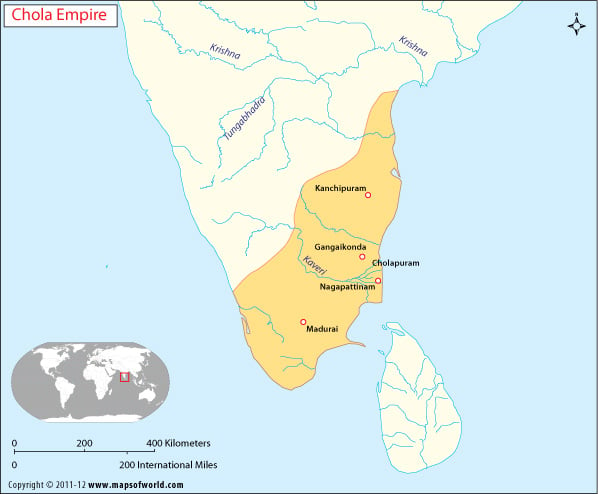Mauryan texts suggest that the Chola dynasty dates back to the third century BC. The Cholas started to build their kingdom around the Kaveri River Valley. The later Chola kings, however, conquered all the land south of the Tungabhadra River.
King Rajaraja Chola I and King Rajendra Chola I were extremely ambitious monarchs who believed in territorial expansion. Having conquered Sri Lanka, they went on to build a mighty empire in southeast Asia. Their influence extended across Bengal, Burma, and the Malay islands. The navy of the Chola kings was the mightiest in Asia. The Empire of Srivijaya succumbed to the onslaught of the Chola Navy.
International Relationships
The Chola kings were champions of maritime trade and diplomacy. Sri Lanka was conquered and the Sinhala king, Mahendra V, was subdued in a naval war. Indonesian countries such as Sumatra were made allies, and the spread of Tamil culture through Indonesia and Malaysia is evidence of the Chola enterprise. Strong trade links were maintained with the Arabs and Chinese. The Tang Dynasty records show that the Chola kings were important trade associates. A strong navy aided in maintaining cordial international relationships. The commanders of the Chola Navy often doubled as diplomatic envoys or emissaries of the kings.
Cultural Legacy of the Cholas
The Chola kings were the champions of art, architecture, and literature. The cultural movement that had been initiated by the Pallava kings reached a crescendo under the reign of the Cholas. Culture and religion were inseparably fused. Art and design reached an excellence unprecedented in India.
The Chola kings were passionate Saivites. They commissioned a number of Shiva temples across south India. The two Chola monarchs, Rajaraja Chola I and Rajendra Chola I, left an indelible mark with the grand temples of Thanjavur and Gangaikondacholapuram. Both temples are now designated UNESCO World Heritage Sites. The towering structures, intricate carvings, beauty, and symmetry of these temple complexes are perfect examples of the creative genius patronized by the Chola kings.
The highlight of the Chola temples was the bronze utsava idols, or the idols used for public functions. These were fashioned using the lost wax technique, and are known for their beauty. The clothes, jewelry, and flowers of the deities were intricately designed in bronze. The best known bronze idol of the Chola era is the Nataraja idol. Besides the intricacy, the balance and contour of the image are exemplary.
Tamil literature reached its apex during the Chola era. Kambha Ramayanam, though based on Valmiki’s Ramayana, is believed to depict the excellence and beauty of the Chola country. Tamil poetry, dance, and drama were in their heydays during this era.
The growing strength of the Pandyas was one of the reasons for the decline of the Chola Empire in the thirteenth century AD. Also, it had become impossible to maintain adequate control over the unwieldy empire. Despite the decline of the empire, the Chola kings left a legacy of culture, diplomacy, harmony, and administration that was unparalleled in South Asia.

 Seleucid Empire Map
Seleucid Empire Map